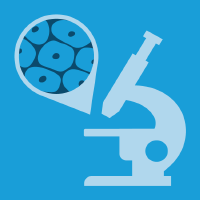Topic Menu
► Topic MenuTopic Editors
Molecular and Cellular Mechanisms of Cancers: Breast Cancer
Topic Information
Dear Colleagues,
Breast cancer is the most common cancer in women. Different types of breast cancer show considerable variability in prognosis and treatment modalities based on cellular targets. Despite advances in diagnostics and improvements in treatment options, breast cancer is a leading cause of cancer-associated deaths. Triple-negative breast cancer (TNBC) often lacks the expression of estrogen receptor α (ER), progesterone receptor (PR), and human epidermal growth factor receptor 2 (HER2). TNBC accounts for 15–20% of all diagnosed breast cancers. This aggressive subtype can metastasize to the lungs and brain, leading to significant patient mortality. Thus, it is imperative to uncover innovative approaches to combat TNBC and improve patient survival. We are facing many challenging questions in TNBC. For example, metastasis to distant organs heavily involves interaction between tumor cells and the microenvironment, both at the primary and metastatic sites. We need to know how the tumor microenvironment contributes to immunotherapy resistance. The aim of this issue is to bring researchers and clinicians together to explore challenging issues and solutions regarding TNBC. Special considerations should be given to new findings of TNBC metastasis, chemotherapy, immunotherapy, tumor metabolism, and tumor microenvironment. We expect that this Topic will provide new findings into TNBC and facilitate innovative approaches to treat patients.
Dr. Yi Huang
Dr. Qun Zhou
Topic Editors
Keywords
- novel mechanisms of TNBC progression
- chemotherapy
- immunotherapy
- new drug development
- metabolism
- tumor microenvironment
- biomarkers and clinical trials
Participating Journals
| Journal Name | Impact Factor | CiteScore | Launched Year | First Decision (median) | APC |
|---|---|---|---|---|---|

Biomolecules
|
5.5 | 8.3 | 2011 | 16.9 Days | CHF 2700 |

Cancers
|
5.2 | 7.4 | 2009 | 17.9 Days | CHF 2900 |

Cells
|
6.0 | 9.0 | 2012 | 16.6 Days | CHF 2700 |

Journal of Molecular Pathology
|
- | - | 2020 | 24.9 Days | CHF 1000 |

Organoids
|
- | - | 2022 | 15.0 days * | CHF 1000 |

International Journal of Molecular Sciences
|
5.6 | 7.8 | 2000 | 16.3 Days | CHF 2900 |

Molecules
|
4.6 | 6.7 | 1996 | 14.6 Days | CHF 2700 |
* Median value for all MDPI journals in the second half of 2023.

MDPI Topics is cooperating with Preprints.org and has built a direct connection between MDPI journals and Preprints.org. Authors are encouraged to enjoy the benefits by posting a preprint at Preprints.org prior to publication:
- Immediately share your ideas ahead of publication and establish your research priority;
- Protect your idea from being stolen with this time-stamped preprint article;
- Enhance the exposure and impact of your research;
- Receive feedback from your peers in advance;
- Have it indexed in Web of Science (Preprint Citation Index), Google Scholar, Crossref, SHARE, PrePubMed, Scilit and Europe PMC.


